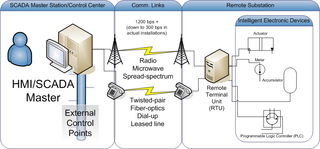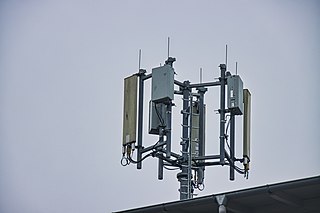Architecture overview

Although there are different proposals of network slice architectures, [20] [21] [22] it is possible to define a general architecture that maps the common elements of each solution into a general and unified framework. From a high-level perspective, the network slicing architecture can be considered as composed of two mains blocks, one dedicated to the actual slice implementation and the other dedicated to the slice management and configuration. [3] The first block is designed as a multi-tier architecture composed by three layers (service layer, network function layer, infrastructure layer), where each one contributes to the slice definition and deployment with distinct tasks. The second block is designed as a centralized network entity, generically denoted as network slice controller, that monitors and manages the functionalities between the three layers in order to efficiently coordinate the coexistence of multiple slices. [9]
Service layer
The service layer interfaces directly with the network business entities (e.g. MVNOs and 3rd party service providers) that share the underlying physical network and it provides a unified vision of the service requirements. Each service is formally represented as service instance, which embeds all the network characteristics in the form of SLA requirements that are expected to be fully satisfied by a suitable slice creation. [20]
Network function layer
The network function layer is in charge of the creation of each network slice according to service instance requests coming from the upper layer. It is composed of a set of network functions that embody well-defined behaviors and interfaces. Multiple network functions are placed over the virtual network infrastructure and chained together to create an end-to-end network slice instance that reflects the network characteristics requested by the service. [1] [4] The configuration of the network functions are performed by means of a set of network operations that allow management of their full lifecycle (from their placement when a slice is created to their de-allocation when the function provided is no longer needed). [3]
To increase resource usage efficiency, the same network function can be simultaneously shared by different slices at the cost of an increase in the complexity of operations management. Conversely, a one-to-one mapping between each network function and each slice eases the configuration procedures, but can lead to poor and inefficient resource usage. [1] [5]
Infrastructure layer
The infrastructure layer represents the actual physical network topology (radio access network, transport network and core network) upon which every network slice is multiplexed and it provides the physical network resources to host the several network functions composing each slice. [23]
The network domain of the available resources includes a heterogeneous set of infrastructure components like data centers (storage and computation capacity resources), devices enabling network connectivity such as routers (networking resources) and base stations (radio bandwidth resources). [13]
Network slice controller
The network slice controller is defined as a network orchestrator, which interfaces with the various functionalities performed by each layer to coherently manage each slice request. The benefit of such network element is that it enables an efficient and flexible slice creation that can be reconfigured during its life-cycle. [4] Operationally, the network slice controller oversees several tasks that provide more effective coordination between the aforementioned layers: [2] [3] [9]
- End-to-end service management: mapping of the various service instances expressed in terms of SLA requirements with suitable network functions capable of satisfying the service constraints.
- Virtual resources definition: virtualization of the physical network resources in order to simplify the resources management operations performed to allocate network functions.
- Slice life-cycle management: slice performance monitoring across all the three layers in order to dynamically reconfigure each slice to accommodate possible SLA requirements modifications.
Due to the complexity of the performed tasks which address different purposes, the network slice controller can be composed by multiple orchestrators that independently manage a subset of functionalities of each layer. To fulfill the service requirements, the various orchestration entities need to coordinate with each other by exchanging high-level information about the state of the operations involved in the slice creation and deployment. [5]






